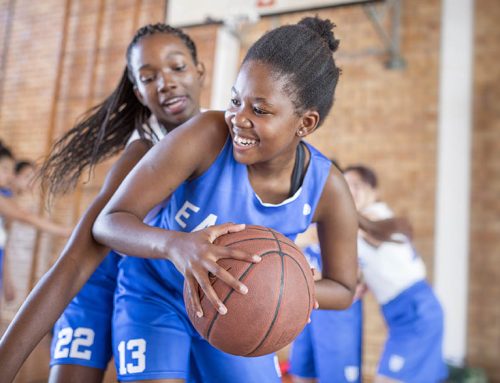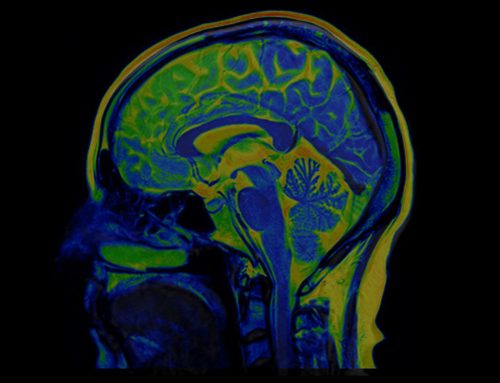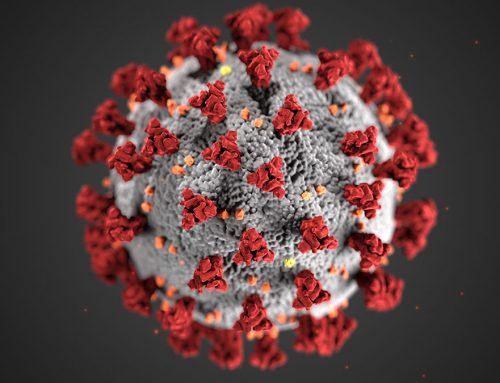Viral skin infections commonly seen in athletes include:
- Molluscum contagiosum
- Herpes simplex virus
- Warts
Molluscum Contagiosum
Molluscum contagiosum is caused by a pox virus. Typically seen in young children, the infection can be spread by skin-to-skin contact or by sharing pools, decks, and other wet environments with someone who has the infection.
Molluscum contagiosum causes lesions (mollusca) that usually occur in clusters in the body’s creases — such as the underarms, elbow, and behind the knees — although they may appear in other places, as well.
Mollusca are usually small (3 to 4 mm in diameter), pink, and dome-shaped with a small depression, or dimple, in the center. They are often surrounded by an itchy, eczema-like rash.
Treatment. If left untreated, mollusca may eventually resolve on their own. The lesions often spread, however, so it can take from several months to several years for untreated lesions to go away completely. For this reason, treatment is often recommended.
Mollusca are often treated with medications, including:
- Cantharidan. This painless blistering agent is applied in the doctor’s office. Several treatments 2 to 3 weeks apart are usually required.
- Imiquimod, 5-fluorouracil, or tretinoin. These topical prescription medications can be applied at home. In some patients, however, they can be irritating to the skin and slow to work.
Mollusca may also be treated with cryotherapy or curettage. In cryotherapy, the doctor freezes the lesions with liquid nitrogen, which causes the cells to die. Curettage is a minor surgical procedure in which the doctor scrapes off the lesions.
Herpes Simplex Virus
The herpes simplex virus (HSV) typically causes a recurrent cluster of tender, burning blisters on or around the mouth or lips. Before these blisters appear, you may feel a burning or tingling sensation in the infected area.
The blisters usually crust over after several days and resolve in 2 to 3 weeks. Because the virus can remain in the skin, reoccurrence in the same location is common.
In wrestlers, HSV often appears in other places on the body — including the neck, torso, and extremities — and is commonly referred to as “herpes gladiatorum.” When it affects the fingertip, it is known as “herpetic whitlow.”
If the blisters have crusted over, HSV is sometimes misdiagnosed as impetigo (a bacterial skin infection), acne, or eczema, which can lead to a delay in treatment.
Treatment. HSV is usually treated with an oral antiviral drug such as valacyclovir or acyclovir. These drugs work best to shorten the duration of the outbreak if you begin taking them within the first 72 hours of symptoms.
If the virus reoccurs frequently, your doctor may prescribe a suppressive daily dose of either medication. This will help minimize outbreaks and limit missed events and practices.
Warts
Warts are skin growths caused by the human papilloma virus (HPV). Anyone can get warts, but they are frequently transmitted to athletes through contact with contaminated locker room floors and mats.
Warts are usually light brown, yellowish, or flesh-colored. Because they can be mistaken for callouses, your doctor may pare down the thickened area of skin to look for small black dots. These black dots are actually small clotted capillaries feeding the wart.
Treatment. There are a number of treatment options for warts. Some of them require a short period of recovery due to the slight discomfort they cause. These include:
- Cryotherapy. Liquid nitrogen is used to freeze the wart.
- Curettage. A special instrument is used to scrape off the wart.
- Laser therapy. The wart is burned and destroyed with a laser.
- Topical therapy. A blistering agent, such as cantharidin, is applied to the surface of the wart.
These therapies typically require several treatments 2 to 3 weeks apart. Your doctor will talk with you about whether you can participate in practices and athletic events during this time.
Your doctor may also prescribe a topical prescription medication that can be applied at home, such as imiquimod, 5-fluorouracil, or tretinoin. Although these medications require some work on the part of the patient, they are painless, and using them does not usually impact participation in practices and events.






Leave a Reply